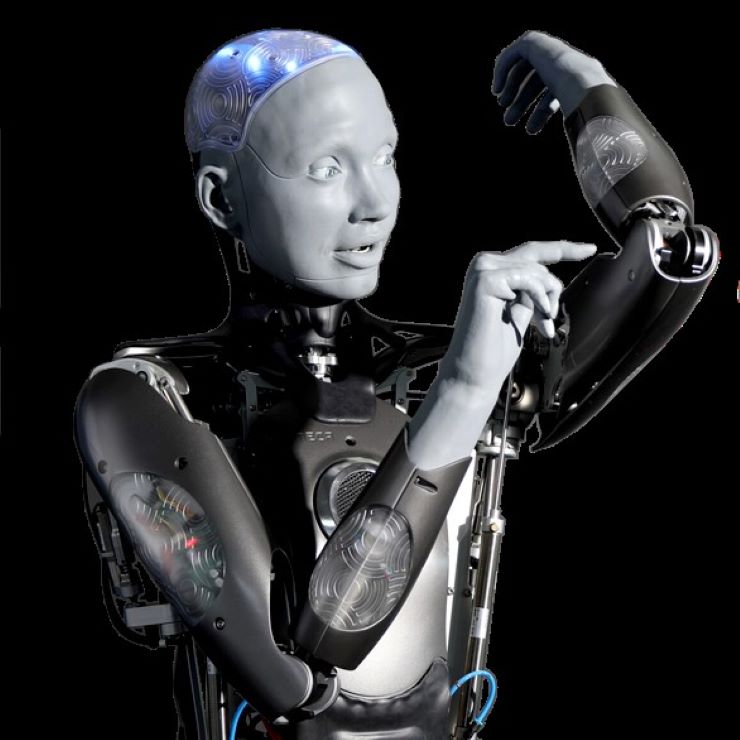Top AI Breakthroughs of 2025
Introduction
The year 2025 marks a turning point in artificial intelligence. What once felt like science fiction has now become part of our daily lives — from healthcare and robotics to climate prediction and creative design.
AI isn’t just smarter — it’s becoming more human-aligned, ethical, and globally impactful.
Below are the five biggest AI breakthroughs of 2025, with visuals that capture their essence.
1. AI Revolution in Healthcare and Genomics

In 2025, AI made breathtaking progress in medicine. DeepMind’s new genomic models reached record accuracy in predicting protein structures — a milestone in understanding diseases.
AI-powered systems can now scan medical images, detect rare genetic conditions, and even design personalized drugs in days instead of months.
Why it matters:
-
Faster diagnosis and drug discovery.
-
Tailored treatments using personal health data.
-
Global accessibility and lower costs.
Ethical challenges:
Data security, bias in medical datasets, and maintaining human oversight.
2. Physical Intelligence – The Rise of Smart Robots

Robots got brains — and bodies. In 2025, humanoid robots like Ameca 2 and Tesla Optimus X began performing real tasks guided by advanced Vision-Language-Action (VLA) models.
These systems can see, understand, and act — interpreting human speech and physical context simultaneously.
Factories, hospitals, and homes now integrate AI robots that adapt through real-world learning.
Why it matters:
-
Safer automation and reduced workplace risk.
-
Assistance for the elderly and disabled.
-
Expansion of robotics into daily life.
Challenges:
Hardware costs, energy consumption, and the ethics of replacing human jobs.
3. Multimodal & Generative AI – From Text to Reality

Generative AI evolved beyond imagination.
Models in 2025 create videos, 3D worlds, and interactive experiences from text prompts. You can describe a movie scene — and the AI renders it in seconds.
This revolution fuels marketing, education, and entertainment, allowing creators to produce high-quality content instantly.
Why it matters:
-
Democratizes creativity — no technical skills required.
-
Boosts content production and design efficiency.
-
Inspires entirely new forms of storytelling.
Risks:
Deepfakes, fake news, and copyright confusion — requiring strong digital governance.
4. AI Infrastructure & Regulation – The Hidden Backbone

Behind every AI innovation is powerful infrastructure.
In 2025, NVIDIA’s Blackwell Ultra GPUs and quantum-hybrid data centers cut training costs by over half.
Meanwhile, AI regulation frameworks emerged across the U.S., EU, UAE, and Asia, focusing on safety, transparency, and human rights.
The conversation shifted from “Can we build it?” to “Should we?”
Why it matters:
-
Faster and greener computing.
-
Fairer global access to AI technology.
-
Increased public trust in automated systems.
Still unresolved:
Power concentration among a few tech giants, and balancing innovation with regulation.
5. AI for Climate, Energy, and Sustainability

In 2025, AI became a guardian of the planet.
New climate-forecasting models predict extreme weather events with unmatched accuracy. Smart-grid systems powered by AI optimize renewable energy usage and reduce carbon emissions.
AI also helps monitor deforestation, ocean pollution, and energy efficiency in real time.
Why it matters:
-
Enables proactive climate response.
-
Makes renewable energy more reliable.
-
Aligns technology with sustainability goals.
Conclusion
2025 is not the year AI became powerful — it’s the year AI became responsible.
From life-saving health innovations to planet-saving energy systems, the technology matured into something more meaningful.
Yet, the challenge remains: ensuring ethical, fair, and inclusive AI for all.
The breakthroughs of 2025 lay the foundation for a smarter, safer, and more sustainable world.
